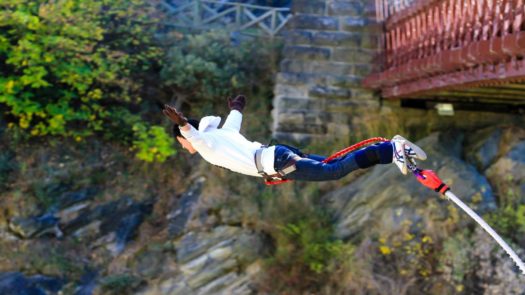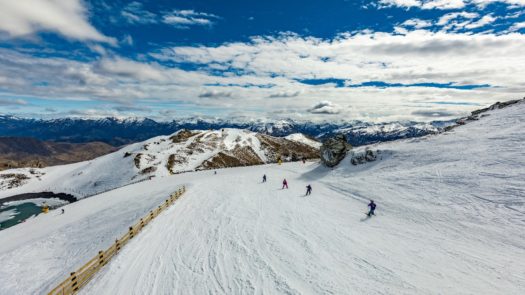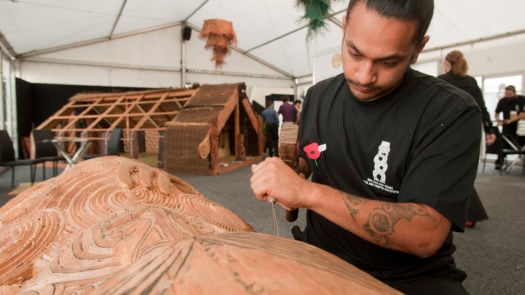Published on: July 25th, 2019
Last updated: July 28th, 2023
New Zealand is a country full of history, culture, landscapes and adventure.
From rafting through Lake Taupo to bungee jumping off the Kawarau bridge, it’s great for thrill seekers too.
With so many picturesque spots to explore though, first-time travellers to New Zealand often wonder whether to start their adventure in the North Island or South Island.
To help you make the decision, our experts have penned their thoughts on what New Zealand’s North and South Islands are best for.
For thrill seekers
As the birthplace of bungee jumping, it’s no secret that New Zealand is a great destination for thrill seekers, and the South Island is the front runner in this category. While the North Island is great for rafting and houses an impressive array of geothermal activity, the South Island pips it at the post with the world-renowned Kawarau Bridge. Far from an ordinary bridge, Kawarau made its mark as the bridge that put bungee jumping firmly on the map.
Located a short drive from Queenstown, Kawarau Bridge is New Zealand’s original bungee jump. At 43 metres tall, daring jumpers can even dip their heads into the Kawarau river on their descent. Set up in the 1980s by a couple of young enterprising Kiwis, AJ Hackett and Henry van Asch’s bungee business has lived up to its name and reached new heights. Since the original bungee jump involving 28 participants in 1988, more than 650,000 people have launched themselves over the edge of this historic suspension bridge.
For foodies
While the entirety of New Zealand is great for food and wine lovers, seafood enthusiasts should head to the crayfish-loving town of Kaikoura on the South Island. In the Maori language, ‘kai’ means fish and ‘koura’ means crayfish, so it’s no surprise that Kaikoura is renowned for its seafood. The high end restaurants are great here, but the ‘seafood caravans’ dotted along surrounding highways are equally worthy of a mention. With these vans offering the catch of the day alongside crayfish, you can’t find a better place to indulge in fresh seafood.
Although foodies can satisfy their taste buds pretty much anywhere in the country, few New Zealand experiences beat looking out onto the Pacific Ocean with fresh crayfish in hand. Kaikoura’s sumptuous crayfish isn’t the only reason to visit this township though – nestled between the mountains and sea, this town is home to a whole host of wonderful seafood.
For skiing
The South Island takes the crown for skiing too, as some of New Zealand’s best skiing experiences are in and around Queenstown & Wanaka. The adventure capital of New Zealand, this small alpine town is a mecca for thrillseekers and nature lover’s alike. As Queenstown is nestled in the heart of the Southern Alps, the closest of four surrounding ski areas is just a 20 minute drive from the town centre.
The ski season runs from June to October, and welcomes skiers of all abilities. After a day on the slopes, travellers can indulge in a local spa or party into the night at après. If you’re looking for a truly unforgettable experience, try heliskiing. The ultimate skiing experience, heliskiing involves travelling by helicopter to the top of a mountain, before making your way back down on skis. A day heliskiing in the South Island’s Queenstown is one of the best ways to get the adrenaline pumping while experiencing all that New Zealand has to offer.
For culture
As the North Island houses almost twice the population of the South Island, the infrastructure lends itself well to educate both locals and visitors about Maori culture. Cultural hotspots include cities like Wellington and Auckland, which play host to some of the best museums in the country. In Wellington, the country’s national Te Papa museum regularly displays exhibitions relating to Maori culture and works with local tribes to facilitate the preservation of local culture.
In Auckland, the Wallace Arts Centre hosts an ever evolving programme of contemporary art exhibitions of over 8,500 preserved works. Events such as the annual Matariki Māori Film Week keep Maori culture intact while entertaining the masses. Perhaps the most interesting thing culturally about the North Island though, is the fact that most of New Zealand’s Maori population reside here. From the moment you step foot on the island, you realise that the Maori people are far from a marginalised group. For a more in-depth cultural experience, head to Rotorua – home to the Mitai Village, where you can experience a cultural performance and typical hangi dinner.
For natural wonders
As it’s home to New Zealand’s geothermal playground, the North Island wins when it comes to natural wonders. There are 22 volcanoes in the Auckland area alone, but the real showstoppers are Rotorua and Taupo. With its endless pools of bubbling volcanoes, Rotorua is one of the most popular tourist spots in the North Island. Unique thermal activity and a multitude of activities make this destination truly unforgettable. With geothermal parks and native forests to explore, there’s no shortage of things to discover.
An hour’s drive away, the town of Taupo rests on the northeastern shore of Australasia’s largest lake. Actually a volcano crater, this lake’s deep blue waters draws visitors from across the globe with its idyllic swimming spots, incredible landscapes and certified adventure sports. With clear day views stretching as far as the snow capped volcanoes of Tongariro National Park, Taupo is a worthy rival of nearby Rotorua.
For watersports
Although the North Island and South Island have been pitted against each other throughout this guide, they’re both equally as good as one another when it comes to watersports. When it comes to white water rafting in particular, there’s little competition between the two. On the North Island, rafting rivers are mostly found in Lake Taupo, the Bay of Plenty and Hawke’s Bay.
On the South Island, rafting is best enjoyed near Queenstown, Christchurch and the wild West Coast. It’s worth checking what grade the river you’re visiting is, as grade one rivers offer relatively tranquil waters with rafting in grade five rivers considered an extreme sport. Lauke Taupo’s ethereal Tongariro River is good for mixed ability rafting, as its home to three sections of white water ranging from grade two to grade four.


















